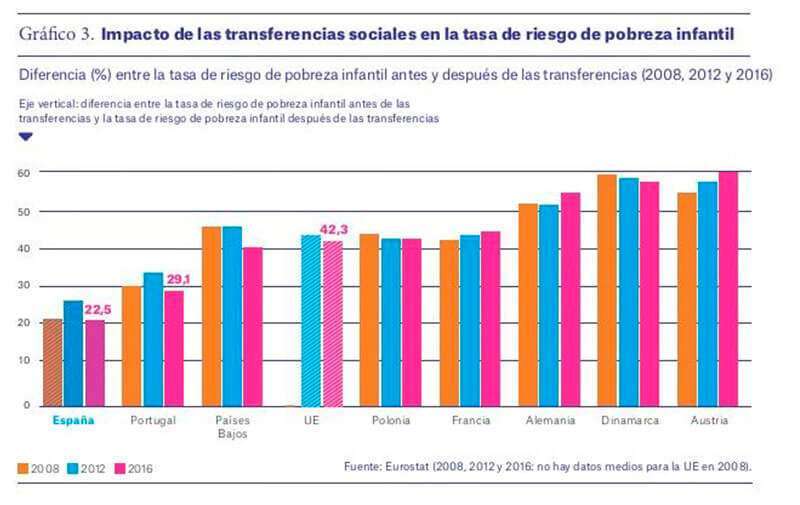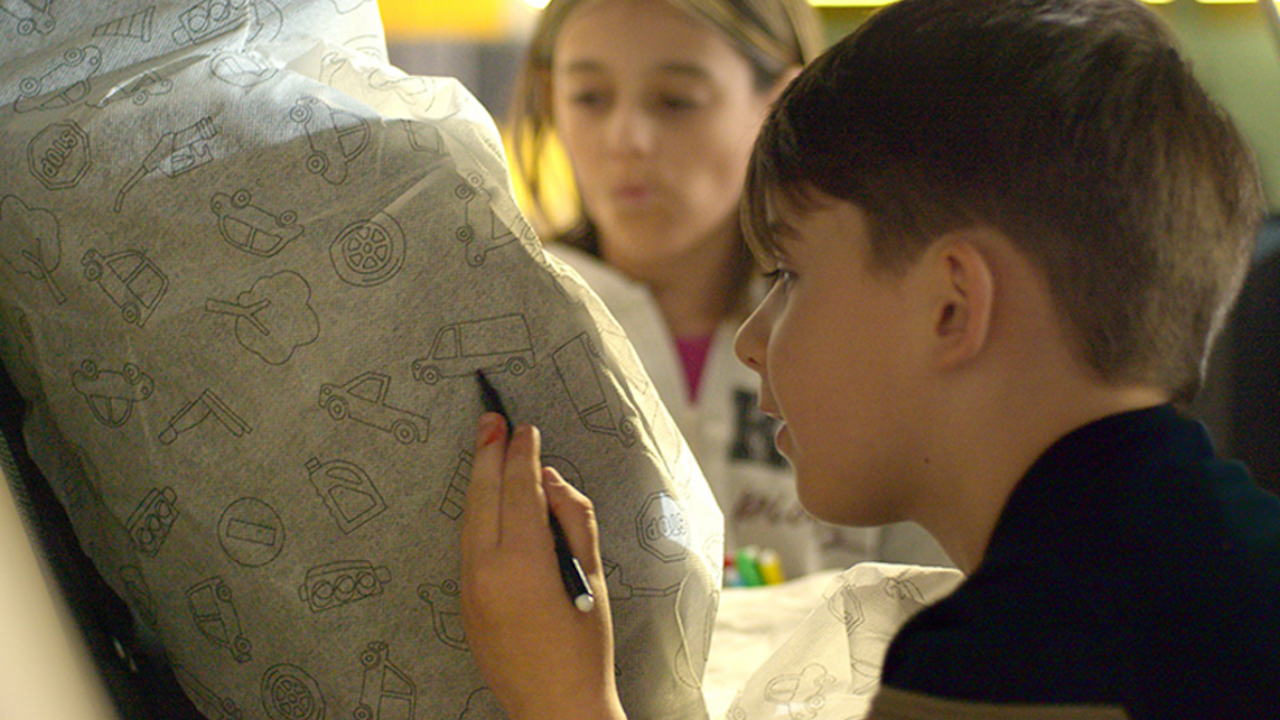The risk of childhood poverty increases by 35.5% in households where only one parent works

Spain is one of the five European countries with the least amount of aid allocated to children. Barcelona, 18 February 2020. The risk of entrenched childhood poverty has increased by 35.5% in households where only one parent works. This is one of the conclusions of the monographic study Objective: to alleviate childhood poverty, published by the Social Observatory of "la Caixa". The main report of the dossier, 'The persistent impact of the economic crisis on childhood poverty', is signed by Sara Ayllón, researcher at the Department of Economics at the University of Girona. The author highlights the close relationship between childhood poverty and the labour market, and not only as a consequence of the economic crisis.
The article specifies that the risk of childhood poverty varies according to the family composition and the employment situation of the parents. When only one of the two parents is employed, living with both does not guarantee a decent life. At the beginning of the period studied, in 2008, more than three out of every ten children in this situation lived below the anchored poverty line (35.5%). The outlook for this group has not improved: in 2018, 48.1% of children in this type of household were living in poverty.
The most vulnerable are those children in families where neither parent works. In 2018, eight out of ten children in this situation were poor, compared to seven out of ten in 2008. These are followed by children growing up in single-parent families where the parent does not work (seven out of ten are poor).

In addition, according to the study, 71.7% of children living in low labour-intensity households - that is, where families have hardly any income from the labour market and work less than 20% of their potential - were poor in 2008. In 2018, this figure increased to more than eight out of ten.
Ayllon makes a diagnosis of the evolution of poverty between 2008 and 2018, and examines how the economic recession has had a significant impact on children, aggravating a situation that was already worrying before the crisis.

The picture shows how Spain currently has one of the highest child poverty rates in Europe. Taking relative poverty as a reference (an indicator that considers those living in households with incomes below 60% of the median equivalent income), the rate was high already in 2008 (26.9%), and reached a peak in 2014 (30.2%), dropping slightly afterwards as the economy grew.
In 2018, 26.6% of children were below the relative poverty line in Spain. The anchored poverty data are not more optimistic. In six years, between 2008 and 2014, anchored poverty increased 12 percentage points among the child population, from 26.9 to 38.9%. As with relative poverty, as the overall economic situation improved, the child poverty rate fell to 29.9% in 2018.

The dossier also contains the study 'Las transferencias a la infancia como mejor método para luchar contra la pobreza infantil', by Elena Bárcena, M. Carmen Blanco and Salvador Pérez, researchers at the University of Málaga. According to this report, concentrating monetary aid on children is three times more effective in combating child poverty than channelling it to the entire population according to their level of income. The authors estimate that a 1% increase in spending on income-conditional transfers, such as unemployment benefits, reduces the likelihood that a child will be at risk of poverty by between 2 and 2.3%.
By contrast, increasing spending on children alone, such as birth and childcare benefits, by the same percentage, reduces the probability by 5.7 per cent to 6 per cent. The authors emphasize that these differences persist regardless of the phase of the economic cycle analyzed (2012 or 2016).

In relative terms, in 2016 our country allocated only 3.3% of total transfers to children, compared with 9% of the European average. This figure places Spain in one of the five countries at the bottom of the European Union in this type of aid to children. The amount of child transfers is low, but in addition these aids have a reduced impact. The data suggest that Spain is one of the European countries that reduces the risk of child poverty the least by means of all monetary aid.
As the report shows, the reduction in child poverty through cash transfers was greater in 2012 than in 2016, reflecting the particular importance of the transfer buffer effect during the recession. However, despite the greater impact in 2012, it was precisely during the crisis period when Spain reduced the amount of cash aid for children the most in relative terms.
According to the authors, Austria, Denmark, Sweden and Germany have higher social spending and universal child protection benefits, such as child benefit, which benefit a larger population and tend to be more generous, generating considerable social support and therefore less risk of cuts in times of austerity.

The "la Caixa" Social Observatory is an initiative to study new social phenomena in four areas: social inclusion, education, science and culture. The analysis of the "la Caixa" Social Observatory is based on a barometer of key indicators on issues of social interest in the member countries of the European Union and the OECD, in addition to articles, interviews and reviews signed by experts.








